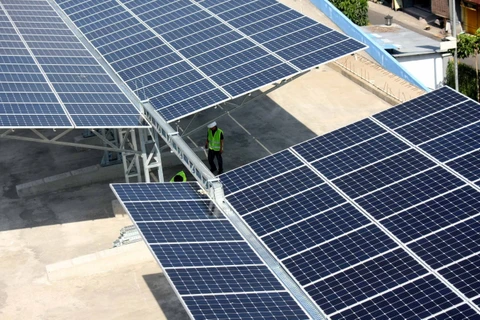Jakarta (VNA) – Indonesia is gearing up to move away from a predominantly coal-based economy to one focused on natural gas and renewable energy sources to achieve its pledge of net zero emissions by 2060.
According to Jakarta Post, the country’s state-owned electricity company PLN is leading the transition to cleaner sources of energy. With an ambitious plan to cap power sector emissions at 247 million tonnes of CO2 equivalent (mtCO2e) by 2030, PLN Energi Primer Indonesia (PLN EPI) is committed to ensuring both greater access to reliable electricity and significant emissions reductions.
Following the resumption of post-pandemic activities, emissions from the energy sector surged to 715 mtCO2e in 2022, driven by an increase in coal-fired power generation.
Despite coal accounting for 67% of Indonesia’s energy mix in 2023 for power generation, the nation is undergoing a broader energy transformation, according to Jakarta Post.
PLN’s demand for liquefied natural gas (LNG) is expected to be more than 6 million tonnes this year and 6.5 million tonnes per year from 2025 to 2029.
This reflects the company’s shift to LNG to support the expansion of gas-fired power generation capacity. This has led to an increasing demand for LNG imports in Indonesia as the country gradually moves away from coal and other fossil fuels.
Indonesia’s total power generation capacity is 81 GW, 60% of that is generated by PLN, and the remaining 40% by independent power producers.
A landmark development in 2024 in Indonesia’s power sector is the PLN’s participation in developing, owning and operating LNG stations in the Sulawesi-Maluku power cluster project. It highlights PLN's shift in fuel sources and its important role in the energy development landscape in Indonesia.
It is expected to bring a cumulative capacity of 866 MW to the region. It demonstrates the potential to significantly reduce emissions, displacing diesel-fuelled capacity and achieving a 30% carbon emissions reduction target, equivalent to avoiding 1.6 mtCO2e per year./.






















